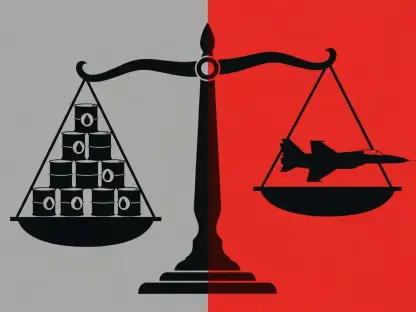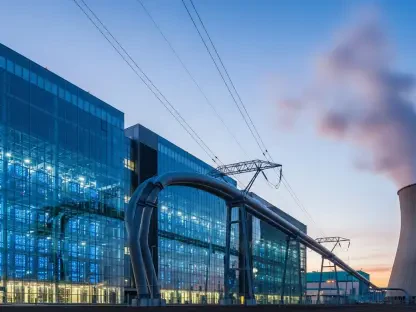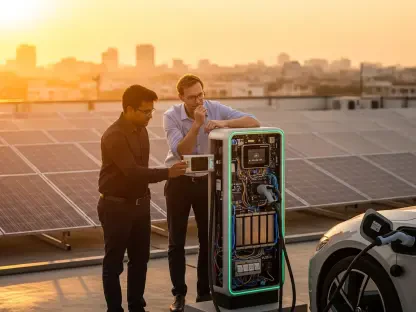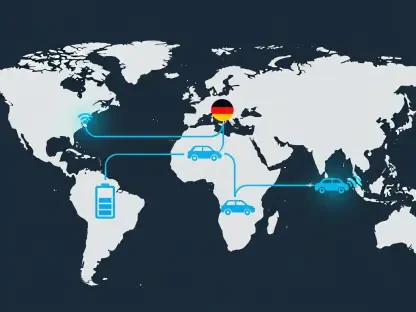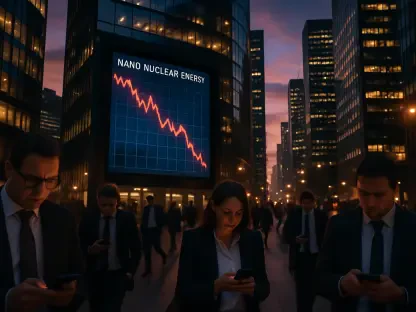What happens when a monumental solar energy project, designed to light up millions of homes, stumbles over a single financial hurdle? In Andhra Pradesh, a southern state in India, a groundbreaking deal with Adani Green Energy teeters on the edge of collapse due to a fierce dispute over transmission fees. This clash isn’t just a regional squabble; it’s a window into the broader challenges of aligning state demands with national policies in India’s ambitious renewable energy journey. The stakes are high, and the outcome could reshape how clean energy projects unfold across the nation.
A Solar Standoff: What’s Behind the Conflict?
At the heart of this tension lies a 2025 agreement for 7,000 megawatts of solar power, with over 4,000 megawatts already prepared for delivery by Adani Green Energy. The sticking point? Andhra Pradesh’s insistence on a complete waiver of interstate transmission fees for the 25-year contract duration. Without this exemption, the state argues, the cost of solar power would surge by nearly 40%, from 2.49 rupees per unit to 3.49 rupees per unit, making the deal financially unfeasible for a region already strapped for funds.
This disagreement has halted progress, with the state refusing to accept power until its demand is met. A letter sent to the Solar Energy Corporation of India (SECI), the government body overseeing the contract, underscores Andhra Pradesh’s firm stance. Meanwhile, the ripple effects of this standoff threaten not just local energy supply but also investor confidence in India’s renewable sector, where timely execution is critical.
The Wider Lens: Transmission Fees and India’s Green Ambitions
India’s goal to lead in renewable energy by 2030 hinges on overcoming intricate financial and regulatory barriers. Transmission fees, mandated by federal law, are a cornerstone of this system, ensuring infrastructure costs are covered. However, for states like Andhra Pradesh with tight budgets, these charges can inflate project expenses to unsustainable levels, creating friction between affordability and compliance with national rules.
This particular dispute reflects a larger dilemmhow to harmonize state-level incentives with federal mandates. If unresolved, such conflicts could slow India’s progress toward its renewable targets, which include generating 50% of power from non-fossil sources by the end of this decade. The clash serves as a cautionary tale for policymakers striving to balance economic constraints with the urgent need for sustainable energy solutions.
Breaking Down the Deadlock: Core Issues and Key Players
Several layers define this complex dispute between Andhra Pradesh and Adani Green Energy. The state’s demand for a fee waiver stems from an alleged promise made during initial negotiations, though regulatory shifts have since made such exemptions untenable under current laws. SECI, caught in the middle, lacks the authority to grant waivers, leaving the agreement in limbo despite months of dialogue.
Adani Green Energy, for its part, has been ready to supply power since early this year, sending repeated reminders to the state to begin offtake. Beyond the financial tug-of-war, political undercurrents add further strain. Allegations of a $265 million bribery scheme tied to power contracts in the state, though denied by the company, have fueled accusations of favoritism from opposition parties, casting doubt on the deal’s integrity and intensifying public scrutiny.
Hearing the Voices: Perspectives from All Sides
Stakeholders in this saga offer contrasting views that highlight the depth of the challenge. A representative from Adani Green Energy emphasized their readiness, stating, “The infrastructure is in place, and supply can start immediately upon agreement.” This reflects a push for resolution while maintaining contractual obligations, though the company remains silent on the waiver debate itself.
Conversely, Andhra Pradesh’s unwavering position, as conveyed in official communications, prioritizes fiscal relief over immediate action, with the state arguing that accepting power without cost concessions would burden taxpayers. Industry observers note that such disputes are symptomatic of deeper systemic issues, pointing to internal dissent during the deal’s approval process. Meanwhile, political critics continue to leverage international allegations to question the transparency of agreements involving major conglomerates, keeping the controversy alive in public discourse.
Finding a Way Forward: Solutions to Salvage the Deal
Resolving this impasse demands creative and collaborative approaches before it derails a critical piece of India’s energy puzzle. One potential avenue involves federal mediation to explore alternative subsidies or financial mechanisms that could offset transmission costs for Andhra Pradesh without violating legal frameworks. Such intervention might bridge the gap between state needs and national policies.
Another option lies in negotiating a temporary cost-sharing model between the state and Adani Green Energy, easing immediate pressures while long-term fixes are devised. Additionally, addressing the shadow of bribery allegations through independent probes could restore trust and credibility to the process. Ultimately, this situation calls for clearer guidelines on incentives in energy contracts, ensuring future projects avoid similar pitfalls through proactive policy alignment.
Reflecting on the Outcome
Looking back, the standoff in Andhra Pradesh stood as a pivotal moment that tested the resilience of India’s renewable energy framework. The clash over transmission fees revealed how financial disputes could spiral into political and regulatory battles, stalling progress on vital infrastructure. Each stakeholder—be it the state, the corporation, or the federal intermediaries—faced tough choices that shaped the trajectory of clean energy adoption.
The resolution, whether through compromise or reform, needed to prioritize transparent mechanisms that balanced cost concerns with compliance. Establishing robust federal-state coordination emerged as a critical lesson, ensuring that economic incentives aligned with national goals. Moving ahead, the focus had to shift toward crafting policies that preempted such conflicts, safeguarding India’s path to a sustainable energy future while maintaining trust among all parties involved.


